Competitive Void Guide
jbai
June 25, 2012
Competitive Role
Roles:
Hard carry
Initiator
Timing window:
Void requires an extensive amount of farm before he reaches the critical point of being able to carry.
In a competitive game where Void is ensured farm by his teammates (trilane or dual-lane with support) and has a steady stream of farm, Void's carry potential comes online at around the 38 minute mark.
This is when all spells (especially Chronosphere level 3) has been maxed, and Void has picked up his core which consists of at least one potent damage dealing item, and can successfully burst down supports in the 4 second duration of Chronosphere.
---
Situations where Void is picked:
When the other team picks a hard carry, and your team plans on out-carrying with Void.
(Antimage) and Morphling are the most common competitive staple hard carries.
Typically, a pushing lineup is used to counter hard-carry farming lineups, but if the other team has powerful anti-push heroes (e.g. Earthshaker, Windrunner, Tinker) or if strong early pushers are banned out (e.g. Chen, Enchantress, Enigma), the only option is to go with a harder carry.
Void is often regarded as the hardest of all carries, usually being compared to Spectre or Morphling. However, what Void actually is, is a high risk high reward hero who depends a lot on landing a good ultimate; very much like Enigma.
A late-game Chronosphere makes or breaks huge team battles, and thus often decides games.
Skill justification
Early Timewalk levelling should not be underestimated.
Void's other two passives are good, but only become really good as the game goes on.
One level of each of the passives should be obtained for the random-luck factor.
Level 3 Timewalk is important because:
- Cooldown is reduced by 4 seconds (from 19 to 15 sec)
- Range is increased to 1100, allowing off-screen intiation/better escape
- Slight increase in slow debuff.
Chronosphere is maxed when possible.
Passives should be levelled depending on how defensive/offensive current game-state is, but alternating between the two is standard.
Item justification
Void should be guaranteed early farm with your team's support, and Quelling Blade allows easier last hitting, especially under friendly towers.
Standard health regen and stats to be built into wand later.
Core items:
Treads for movespeed/attackspeed/stats
Poor man's for better creep damage block.
Wand for burst heal/mana/stats.
At this point, void can contribute a little to teamfights, but not much. Farming is still most important focus.
Extensions:
Daedalus/Desolator/MKB can all be first items to be aimed for.
MKB ministun will not stack with bash, but truestrike is important against Butterfly carries, Windrunner, Brewmaster etc.
A defensive item is usually next.
BKB is used to guarantee Timewalk-->Chrono initiation as well as prevent disables from any heroes not caught by Chrono.
Manta is to counter Silence and increase pushing power.
Situational:
Mask of Madness allows earlier pick-off of enemy supports caught out of position, but increased damage is risky and may lead to big counter-ganks.
Also allows easier jungle transition.
Diffusal blade is to counter certain heroes (Omniknight, Warlock)
Midas is not often rushed but can be obtained if the game is extremely passive.
Boots of travel/rapier are extreme late-game options.
Battlefury is viable for better pushing/farming but especially useful for anti-illusion heroes (Carries with Manta, Chaos Knight, etc)
Teamfight strategy
Void does not usually initiate teamfights right off the bat, but waits for a full blown engagement to have started, and once the initial wave of disabling spells have been used and are on Cooldown.
Proceed to Timewalk --> Chronosphere on the maximum number of heroes, aiming primarily for support heroes with capability to disable.
Primary targets to right-click down:
- Heroes with big ultimates that haven't been used (Enigma, Brewmaster)
- Squishy heroes with escape mechanism (Windrunner, Shadow Demon, Queen of Pain)
- Low health targets
Don't waste time going for heroes that you cannot kill in the 4 second window (which is often the opposing enemy carry); killing two supports and getting the hero advantage is much more important.
Hero Synergies
Chrono comboes very well with some specific heroes.
Big Lich, Sandking, Witch Doctor, Death Prophet ultimates are guaranteed under Chronosphere.
Darkseer Vacuum is excellent at setting up big Chronospheres, and Ion Shell increases total damage done significantly.
Strong global and anti-push heroes (Furion, Tinker, Windrunner, Earthshaker) exerts map control and holds the fort long enough to give Void the space and time to farm (pun wasn't intended).
Counters
The biggest counter to Void is good positioning by the opposing team.
Enemy Lich/Sandking/Witch doctor can of course, turn your ultimate against you.
Nuker/spammer heroes make Voids early-mid game difficulty.
Long-range disables (especially Windrunner shackleshot) can put an entire Chonosphere to waste.
And standard anti-melee counters (Force Staff, Ghost Sceptre, Blink).
 Iron Branch
Iron Branch




































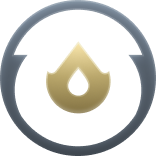
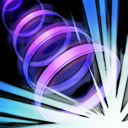

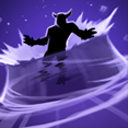

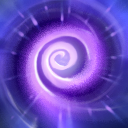

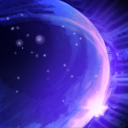


Quick Comment (5) View Comments
You need to log in before commenting.